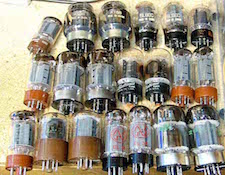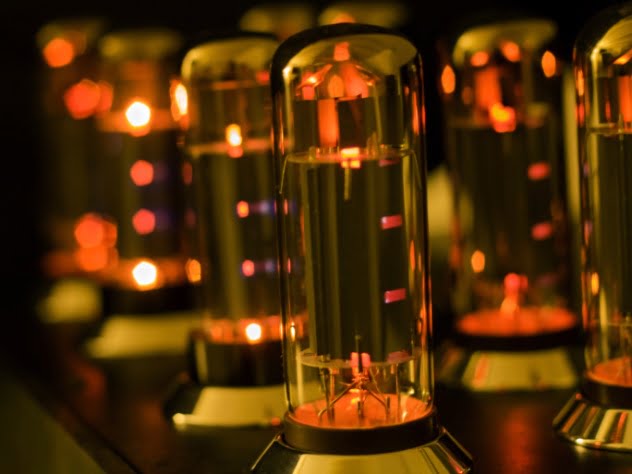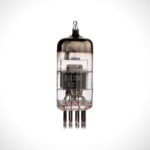It’s the time of year for saving money!
When I took the plunge into more high end audiophile equipment in 2014 one of my first purchases was the excellent Vinnie Rossi LIO, which has an optional tubestage preamp. It is dead easy to access this component and switch out the E88CC dual triodes, but sadly my colossal laziness limited the extent to which I experimented with this. Rossi recently added a Directly Heated Triode (DHT) preamp option and I greedily upgraded; the spuds in this linestage stick out of the top of the unit looking like Tesla-inspired evil little demons, and there is no amount of slacking that could prevent even the most inept of users from tube rolling this preamp. Additionally, Rossi has already done some pretty extensive testing/matching with various DHTs. I literally could not come up with an excuse. So, when the DHT PRE was installed, I set about buying few pairs of tubes off TubeDepot among other online sources.
 The five main matched tube sets I tried with the preamp were the Electro-Harmonix 2A3, the EML 2A3s, the Svetlana 811-10s, the Genalex Gold Lion 300bs, and the Cunningham 301s. In comparing these tubes, my setup and signal path was Roon 1.2, an Apple MacBook Air and TimeCapsule NAS through a MicroRendu streamer to the LIO, Cardas cables and Joseph Audio Pulsars. I chose to compare some of my most familiar and dynamic albums, ones that I had listened to so many times and were in my opinion so well recorded that I didn’t have to second-guess my familiarity with the music. Not shockingly, a lot of these pieces are very guitar-heavy, and ones that I have used aural recall and familiarity with the instrument and player to gain significant insight into the recording.
The five main matched tube sets I tried with the preamp were the Electro-Harmonix 2A3, the EML 2A3s, the Svetlana 811-10s, the Genalex Gold Lion 300bs, and the Cunningham 301s. In comparing these tubes, my setup and signal path was Roon 1.2, an Apple MacBook Air and TimeCapsule NAS through a MicroRendu streamer to the LIO, Cardas cables and Joseph Audio Pulsars. I chose to compare some of my most familiar and dynamic albums, ones that I had listened to so many times and were in my opinion so well recorded that I didn’t have to second-guess my familiarity with the music. Not shockingly, a lot of these pieces are very guitar-heavy, and ones that I have used aural recall and familiarity with the instrument and player to gain significant insight into the recording.
 My first aural tube comparison of these five sets featured an album I know almost by heart, the 1978 Rush masterpiece Hemispheres. Originally recorded at Rockfield Studios in Wales and mixed at Trident Studios in London, the specific version I used was the 24/192 download from HDTracks. This version was directly derived from the 2015 Abbey Roads Remastered recording by Sean Magee which was initially done for 300g vinyl re-release in honor of Rush’s 40th anniversary. I also compared the digital version to the vinyl release using my Pro-Ject Debut Carbon turntable and stock Ortofon 2m Red cartridge into the LIO phonostage. In particular, I listened to one of my favorite Rush tracks, “The Trees.” This piece is classic Rush; notwithstanding Neal Peart’s epic percussion skills and Geddy Lee’s expert bass, Alex Lifeson’s playing is exemplary of his guitar work of most of Rush’s middle period. Lifeson was well known at the time to favor an early seventies white Gibson ES-335. While the earlier clean tones in the piece are harder to ascertain, his 6/8 solos towards the end of the song are absolutely prototypal ES-335 overdriven semi-hollow sound. Using this song to compare different DHTs in the LIO, it is much easier to hear the coloration that different tubes provide. In retrospect, having some aural recall of the guitar track very much enabled me to pick which tube really shined under these conditions.
My first aural tube comparison of these five sets featured an album I know almost by heart, the 1978 Rush masterpiece Hemispheres. Originally recorded at Rockfield Studios in Wales and mixed at Trident Studios in London, the specific version I used was the 24/192 download from HDTracks. This version was directly derived from the 2015 Abbey Roads Remastered recording by Sean Magee which was initially done for 300g vinyl re-release in honor of Rush’s 40th anniversary. I also compared the digital version to the vinyl release using my Pro-Ject Debut Carbon turntable and stock Ortofon 2m Red cartridge into the LIO phonostage. In particular, I listened to one of my favorite Rush tracks, “The Trees.” This piece is classic Rush; notwithstanding Neal Peart’s epic percussion skills and Geddy Lee’s expert bass, Alex Lifeson’s playing is exemplary of his guitar work of most of Rush’s middle period. Lifeson was well known at the time to favor an early seventies white Gibson ES-335. While the earlier clean tones in the piece are harder to ascertain, his 6/8 solos towards the end of the song are absolutely prototypal ES-335 overdriven semi-hollow sound. Using this song to compare different DHTs in the LIO, it is much easier to hear the coloration that different tubes provide. In retrospect, having some aural recall of the guitar track very much enabled me to pick which tube really shined under these conditions.
 I found all five of the matched sets to perform well and without issue. The Electro-Harmonix 2A3s are best described as very detailed, with excellent transient attacks. The soundstage is nice and open, with some coloration, well represented harmonics, and nice deep bass. In contrast, the EML 2A3s were just less hefty in my opinion, and while instrumentation was well separated, I felt the EH 2A3s had the edge in almost every department (Rossi does as well, making the EH tubes the stock LIO DHT tube.) I also enjoyed both the Gold Lions and the Cunninghams, but to my ears the absolute star of the tube shootout was the Svetlana 811-10s. These tubes not only had good instrument separation, great high end sparkle and plumb-the-depths bass, but the soundstage was absolutely holographic. To me, this was the real magic trick of the Svetlanas, and was another epiphany moment for me. In a DHT preamp, the tube is so isolated in a very simple class A configuration, with no output transformer or direct influence by variable speaker load, so that I was finally able to reliably say that I could easily tell the difference between each set of tubes. No longer was I having to take someone’s word for it. I hope by describing in detail how I got to this place using aural recall and a specifically controlled signal path, you will be able to try it yourself and won’t ever have to rely on second hand information to really dial down your system.
I found all five of the matched sets to perform well and without issue. The Electro-Harmonix 2A3s are best described as very detailed, with excellent transient attacks. The soundstage is nice and open, with some coloration, well represented harmonics, and nice deep bass. In contrast, the EML 2A3s were just less hefty in my opinion, and while instrumentation was well separated, I felt the EH 2A3s had the edge in almost every department (Rossi does as well, making the EH tubes the stock LIO DHT tube.) I also enjoyed both the Gold Lions and the Cunninghams, but to my ears the absolute star of the tube shootout was the Svetlana 811-10s. These tubes not only had good instrument separation, great high end sparkle and plumb-the-depths bass, but the soundstage was absolutely holographic. To me, this was the real magic trick of the Svetlanas, and was another epiphany moment for me. In a DHT preamp, the tube is so isolated in a very simple class A configuration, with no output transformer or direct influence by variable speaker load, so that I was finally able to reliably say that I could easily tell the difference between each set of tubes. No longer was I having to take someone’s word for it. I hope by describing in detail how I got to this place using aural recall and a specifically controlled signal path, you will be able to try it yourself and won’t ever have to rely on second hand information to really dial down your system.
About the Author
Matthew Patrick is an Emergency and Diving Medicine physician living in Key West, Florida with his wife, two young sons, and three dogs.
When not in the ER, he spends his time fishing and diving in the Keys and indulging a longstanding obsession with acoustic guitars. Matthew also writes down his thoughts on audio on his personal blog, thecluelessaudiophile.com.








